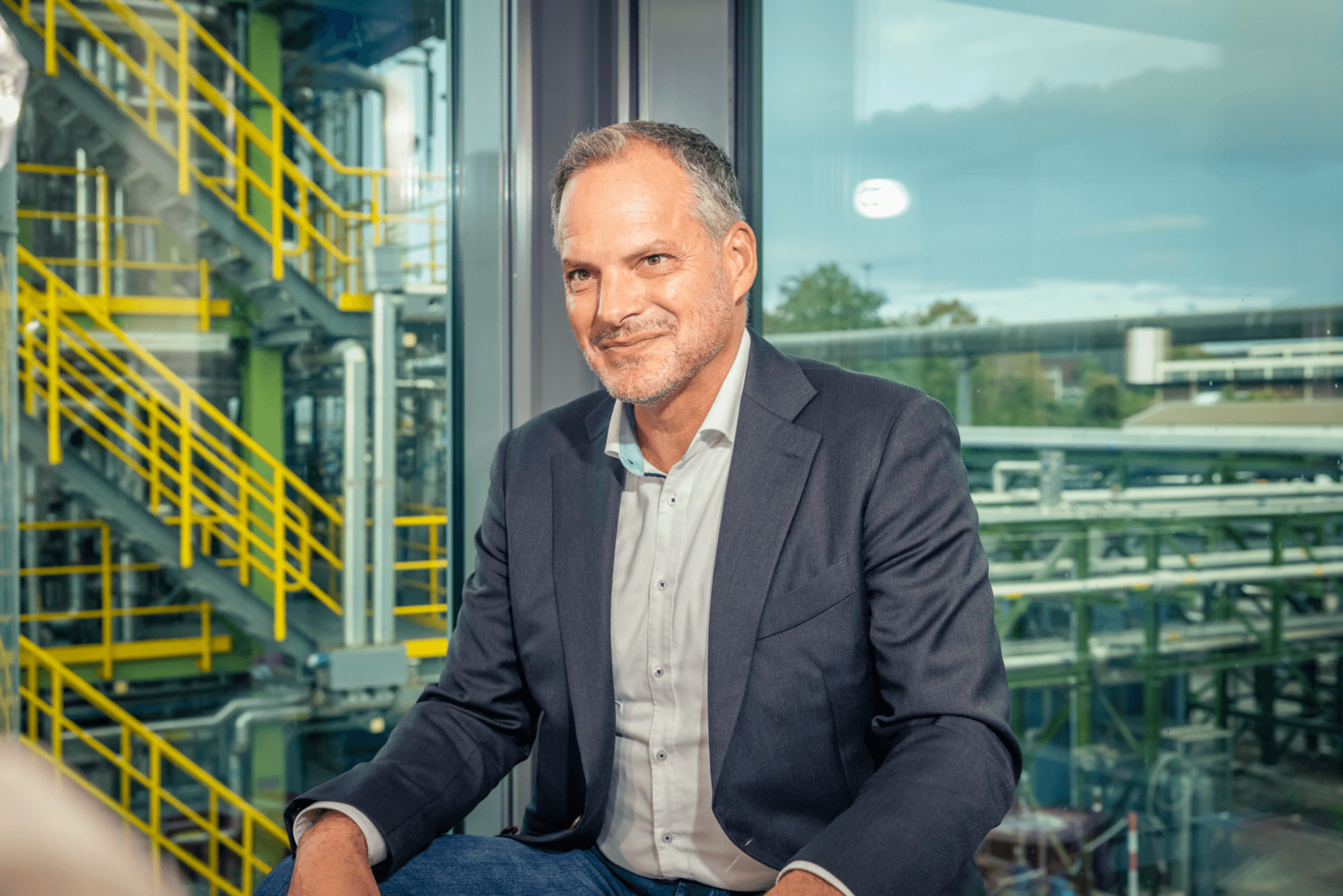Future market green hydrogen
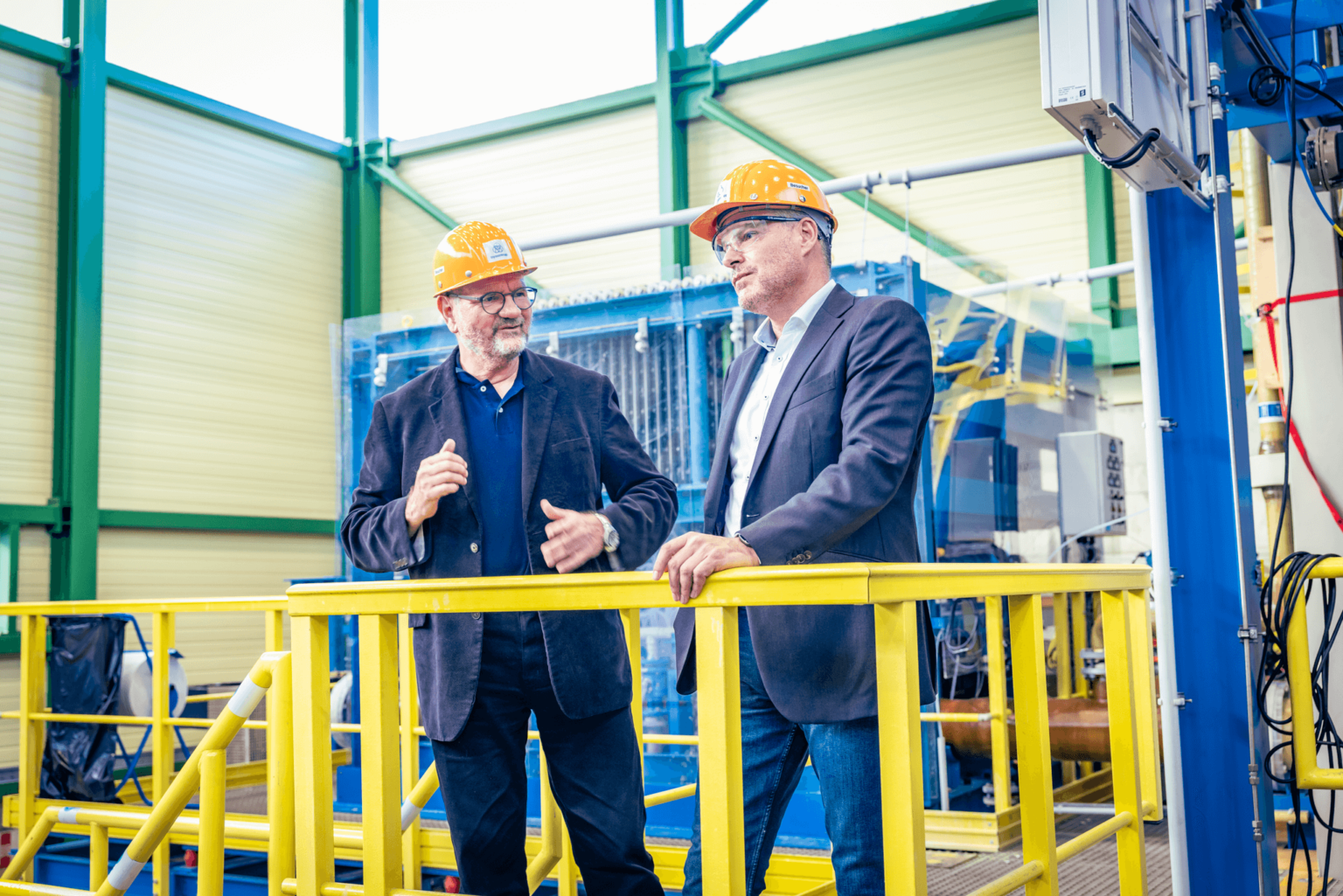
Hydrogen is an indispensable central building block of the energy transition
Katharina Immoor, Head of Communications, in conversation with Professor Robert Schlögl and Dr. Werner Ponikwar on the future role of hydrogen in the energy transition and the CO2 footprint.
Professor Schlögl, Dr. Ponikwar, using hydrogen as the energy carrier for urgently improving the CO2 balance is currently a central topic in the public eye. What is your view of this development?
Very positive. The topic of hydrogen has finally arrived in society and politics, both nationally and interna- tionally. Now there is the willingness necessary to change atti- tudes when it comes to which energy carriers we use to achieve our climate targets. This willingness to open up new avenues to the energy mix is the key driver for real change.
For a long time, hydrogen was considered the champagne of the energy transition. But this statement is wrong. Hydrogen is the mineral water of the energy transition. Without hydrogen, a sustainable energy transition cannot take place. This is a fact, and accepting this is a crucial step towards the neces- sary green transformation process.

Isn't champagne more valuable than min- eral water?
Maybe. But the statement is true – and it has far-reaching significance. Hydrogen will probably need to carry about half of the future energy supply. This makes hydrogen an indispensable central component of the energy transition, and not just an expensive champagne that only few can afford.
To fulfill this role, we need a hydrogen in- dustry with powerful technology. Do we have it?
Germany is by far one of the leaders in the development of hydrogen technologies. Of the nearly 40 compa- nies manufacturing electrolysis components, stacks and other equipment, around one-third are headquartered in Germany – which is a testament to our innovative strength.
I would even add that Germany is one of the world’s leaders in electrolysis research in general, and water elec- trolysis in particular. Some research groups in Germany count among those internationally who are consistently and successfully driving forward this topic from a scientific standpoint.
Prof. Dr. Robert Schlögl
Prof. Robert Schlögl, chemist and catalysis researcher, has been a member of the Leop- oldina (National Academy of Sciences) since 2011 and was elected as its vice president in 2020. Prof. Schlögl is also the founding director of the Max Planck Institute for Chemical Energy Conversion in Mülheim an der Ruhr and director of the Fritz Haber Institute of the Max Planck Society in Berlin. His research focuses on heterogeneous catalysis, nano chemically optimized materials for energy storage concepts, chemical energy conversion, and nature’s energy conversion processes.
For more details on Prof. Schlögl’s academic and professional background, please click here.
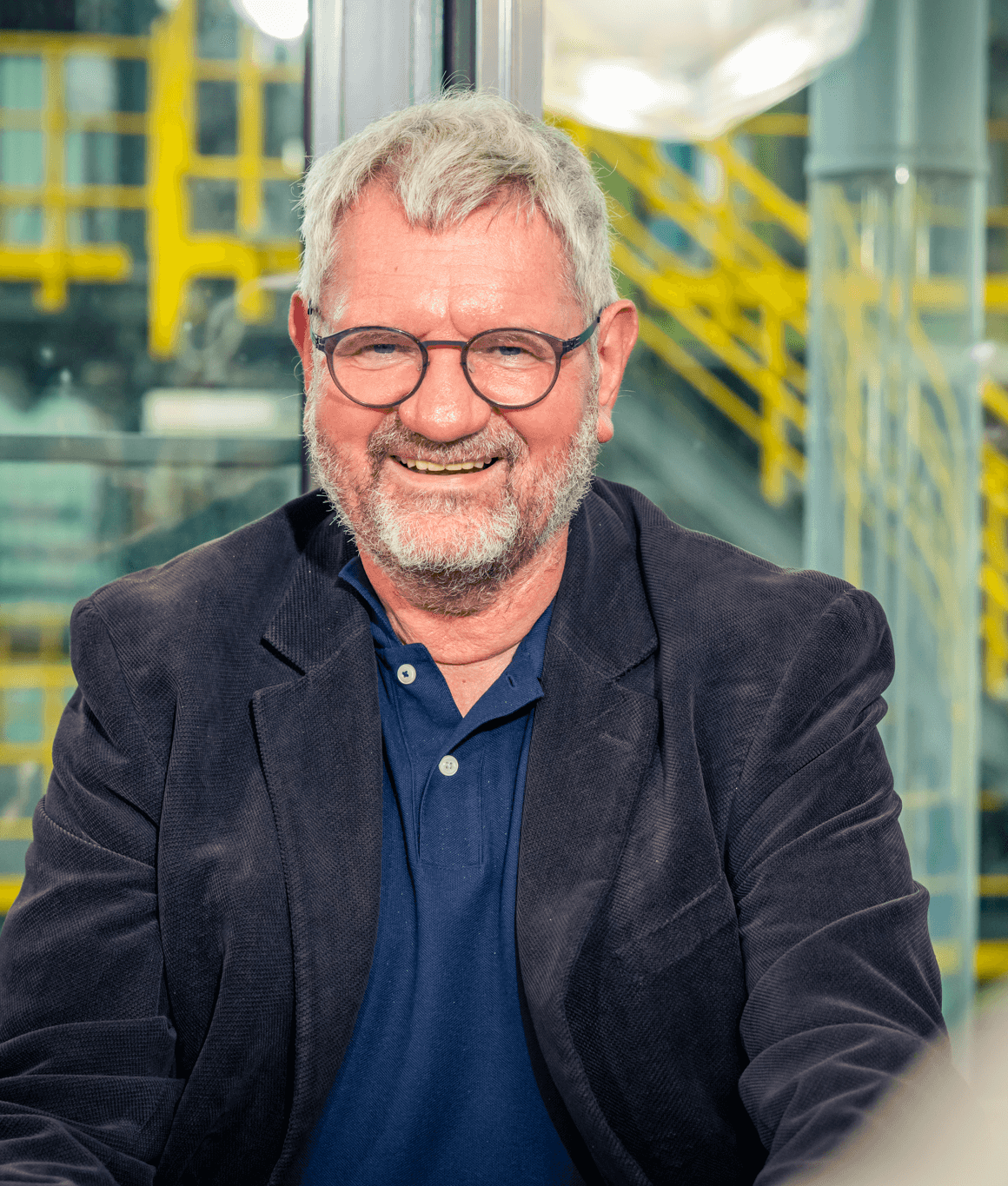
Why
This is due to the fact that the simple things have already been researched. Now come the difficult questions that cannot be solved so quickly or easily. In scientific literature, we can see very clearly that electrolysis research is turning to CO2 reduction and other electrocatalytic processes, with the focus no longer on water splitting itself. This is a mistake, and not the case here in Germany.
Hasn't the topic of water splitting long been researched in all its ramifications?
We would first have to agree on what the mechanism of water splitting is. However, this process is still unclear. The three competing models that currently exist – alkaline electrolysis, PEM and high-temperature electrolysis more information
– do not explain whether splitting occurs differently in alkaline electrolysis as compared to acidic electrolysis, where an acid or alkali is used as the electrolyte. However, we know quite well that the standard model electrolysis theory works with, i.e., that water splitting takes place after the electrons enter the water, is most certainly wrong.
What are the consequences?
Because this basic assumption is wrong, we have to ask ourselves the question, what is true at all? This topic is something my research group is working on intensively more information . The first results are available. Through our experiments we can show, for example, where the geometric site of water splitting occurs, in other words, where exactly at the atomic level the water molecule is split. And here we can see precisely that the location is not in the water.
This is also important basic scientific research that is necessary for us to do if we want to build electrol- ysis systems that are more efficient for large-scale use that, in turn, bring down the cost of hydrogen production even further. And we need to do this because, at the end of the day, hydrogen as an energy carrier has to be affordable…
... in order to be used as an energy carrier at all on a broad scale?
Quite right. In the end, for many industries, hydrogen use has to be economical for them to use it as an energy carrier. There are still a few steps until that point is reached. This type of research is absolutely essential to get there; otherwise, we won’t be able to go down this road successfully, at least not on the technology side.

Dr. Werner Ponikwar
Dr. Ponikwar began his career as Manager Controlling at Degussa AG. He has worked in various positions and locations, including Finance and Controlling, Project Management, Business Development and Marketing. In 2006, he joined Arthur D. Little as a strategy consult- ant. In 2008, he joined Linde AG, where he held various management positions in engineering and industrial gases. From 2017 to 2021, Dr. Ponikwas was CEO/Managing Director of Linde Hydrogen Fuel Tech GmbH. Since July 2022 he has been the CEO of thyssenkrupp nucera AG & Co. KGaA. Dr. Ponikwar studied at Ludwig Maximilian University in Munich and holds a Ph.D. in chemistry.
What role do companies play in accelerat- ing the process?
There are already companies doing pio- neering work in a number of areas – and this does not necessarily need to be just in hydrogen production. For example, in Germany, companies have come together and formed joint ventures to build a network of hydrogen refueling facilities, without yet knowing whether there will be vehicles that can use it. This kind of pioneer- ing work is necessary.
What role does China play in the develop- ment and use of hydrogen technology?
China plays a decisive role. For one, our Chi- nese colleagues are serious partners when it comes to quality. China has long ceased being a scientific developing country. It is true that they think and work differently than we do, but not to their disadvantage. In fact, I believe they are just as good as we are. They also benefit from a political and economic framework that makes it easier for them to get past critical phases, for exam- ple, when such technology is not economically viable. This doesn’t matter in China.
„Hydrogen must be affordable. The total cost of ownership plays a key role.“

Cost does not play a role?
In China, once a decision is made in favor of a technology, the development is pursued rigorously, no matter the cost. This attitude allows a technology to progress more quickly – especially at its inception – than would be possible here.
China will catch up with us very, very quickly – and we with them. All suppliers must ensure that hydro- gen is affordable. The total costs of ownership play a key role. This includes not just investment costs but also operating costs. Companies can only reduce these costs when the longevity of a system increases.
When I take the example of solar cells, the development was similar. In the beginning, Chinese solar cells were much cheaper but of much poorer quality. Today, they are not quite as cheap but are as good as Western solar cells. The price advantage of products from China comes into play mainly in the early stages of a technology. This is why I’m not worried about Western companies.
We have also seen this development pat- tern in the past with chlor-alkali electrolysis. We were able to defend our advantage in terms of quality. With continuous innova- tion, entrepreneurs can ensure they achieve sufficient differentia- tion in terms of technology.
But why does it take so long to get water electrolysis plants up and running, especially those with the necessary capacities in the gigawatt range?
We are at the beginning of developing hydrogen plants with capacities that can meet the growing indus- trial demand for this energy carrier. Hydrogen will be sufficiently available to transform the energy structure and reduce the CO2 footprint. Development however is still somewhat slow.
„Hydrogen is not a last resort solution, but the second, necessary pillar of the energy transition. In fact, this is precisely what we need hydrogen for!“

Why is that?
Project times, from the initial idea to the first kilogram of hydrogen produced by a gigawatt plant, can aver- age between six to ten years. This is clearly too long for the rela- tively rapid transformation of energy production and consumption needed towards the emission-free energy carrier green hydrogen. With our current approval processes, mandatory preliminary stud- ies, and other tasks such as financing, I am afraid this will not happen quickly enough. It is important to point out that, of the six to ten years it takes to complete a project, only two or three years are needed to actually construct the plant and manufacture the necessary components. I am convinced that less complex regula- tion, more practicable standards, and leaner approval processes will make it possible to realize projects at the speed necessary.
I would like to point out an example: the draft of the EU delegated act on the definition of green hydrogen more information . Hydrogen produced in the EU must meet the criteria set out in this legislation in order to be classified as “green” or “renewable”. But, unfortunately, this definition is useless.
That is a harsh verdict. How do you justify it?
The definition reflects the view of many energy users that green hydrogen is some kind of antithesis, or even an enemy of renewable energies. The argument that is always put for- ward is the efficiency argument; namely, renewable energies need to be used as efficiently as possible. In their view, this means the direct use of renewable energies without converting them to hydro- gen under any circumstances. This argument is wrong, but it runs very strongly throughout the regulatory framework’s design, as evi- denced by the abovementioned legislation. In other words, some people want to see hydrogen merely as a last resort solution and not as a second, necessary pillar of the energy transition. While in fact, this is precisely what we need hydrogen for!
Why do preliminary studies play such an important role?
They are important because we still come across peculiarities of this technology in larger plants that are not seen with smaller plants of just a few megawatts because they develop over a very long period of time. In smaller plants, effi- ciency issues often don’t play such a big role. Extensive prelimi- nary studies also continue to be important because the safety of the investment also depends on such issues. And finally, there are not many reference projects.
„It’s crucial for the green energy transformation to understand that we now need to create a technology that is capable of powering the entire world.”
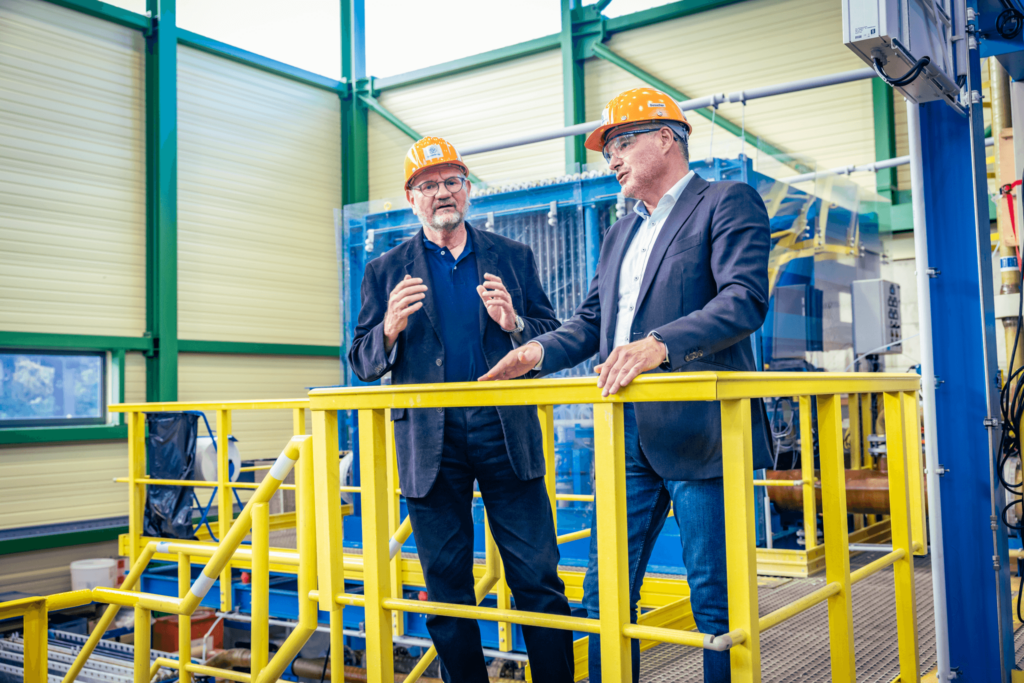
Which is about to change…
… Yes, and then we won’t need as many preliminary studies. As the technology advances, we will also see much greater standardization, just as we did in the case of coal-fired power plants. Today, we know exactly how to build them, but 30 years ago, we didn’t. It will be similar with hydro- gen. One of my major concerns, however, is the prevailing, utterly false opinions about the dimensions of space and time with hydrogen use.
What do you mean?
The prevailing idea is that we will be able to meet the entire demand for green hydrogen in just a few years. That is not realistic. Nor is it realistic to think that the world’s demand for hydrogen, let’s say in 20 years, can be satisfied that easily. We need to set the right course, now, at the beginning of this development process. This takes time and effort, but it will speed things up tremendously in the end and reduce the likeli- hood of bad investments.
Are you concerned about this?
Regulators in Europe get involved, right down to the micromanagement of these processes. This interferes with the creativity that is necessary to find the most optimal solution – especially at the beginning. What is standing in the way are the numerous regulations. This is a real mistake.
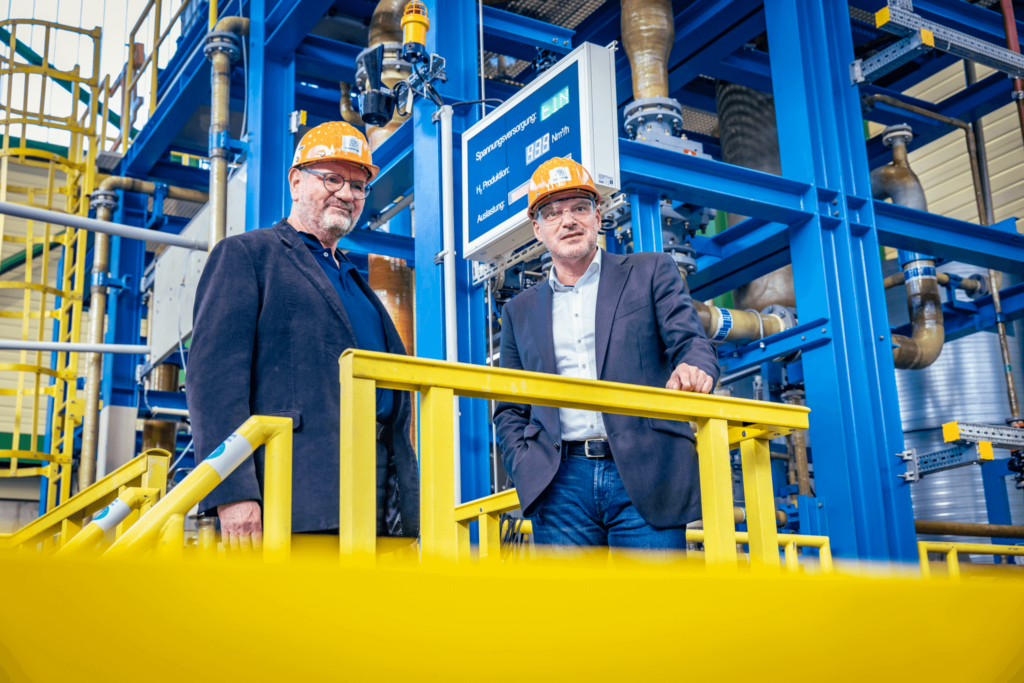
Do you believe that politics are standing in the way of finding an optimal solution?
Yes.
And thus, the achievement of our CO2 targets?
We probably won’t achieve the CO2 targets anyway. But that is not the decisive factor. We need to finally start moving in the direction of hydrogen in order to improve anything at all and not to continue to produce CO2 unchecked. Our mistake is that we don’t start by looking at the end result but set ourselves some big goal, only to later realize it is not achievable. Then we slow down our efforts. Instead, we should finally start tackling the big tasks first, because then we will have gained enough knowl- edge and experience to enable us to tackle, and even solve, the much more difficult issues. At the same time, we will be making our way towards realistic CO2 targets.
Can you give a concrete example?
In terms of uses, we begin with the most difficult in defossilization, namely the use of hydrogen for aircraft. It would be much easier to start with power plants. Incidentally, this is also true when it comes to electrolyzers. In that case, the first thing done is to build a highly efficient small electrolyzer that balances the grid. Instead, we should take advantage of the fact that hydrogen is one of the world’s most widely used basic materials, a commodity. Con- sequently, we need plants with equally large capacities.
„The Inflation Reduction Act in the U.S. creates an investment climate that covers the entire hydrogen value chain. That's how it needs to be done.”

What do you think we should do first?
First, we have to think about the topic in the right dimension – then we will find the right applications. But we won’t succeed if we always think in such small dimensions and build such small electrolyzers that naturally make hydrogen insanely expensive. Thinking in small dimensions is simply too costly and triggers strong reluctance on the part of industrial companies to use hydrogen. We then turn back to cars, but they don’t deliver the high CO2 reductions we need. At the same time, we absolutely require these reductions. A fatal vicious circle.
Today, we already produce 90 million tons of hydrogen worldwide. What is not yet included in this figure are the future applications through which hydrogen is expected to contribute to decarbonization …
… something that has also been done in the past. It is remarkable that green hydrogen has been around in the chemical industry for a long time. Electrolyzers in Scandinavia …
… and those in South Africa …
… are taking advantage of this. And let’s not forget the famous Aswan Dam in Egypt. These examples are already 50 or 100 years old – and the plants still work wonderfully today. It’s not necessarily rocket science to advance the technol- ogy. What is crucial for the green energy transformation is to understand that we now need to create a technology that is capa- ble of powering the entire world. That’s the right dimension. This, by the way, is where earlier projects have failed. These projects were locally focused and not sufficient for the entire world. That’s the real new challenge and sets the standard we strive to achieve in our work.
That’s why it’s so important for us to target large projects and develop our technology in such a way that it can produce hydrogen on a large scale from the very start. It is true that a small system makes it very difficult cost-wise to achieve the nec- essary penetration. The real, essential purpose of green hydrogen production is its contribution to the much-needed energy transition. It is in this dimension that we need to think as well as act.
We also need to map the entire hydrogen value chain more information . This would be the right approach. Here, at the Carbon2Chem® pilot plant more information , that is exactly what we are doing – and we can see that it does indeed work!
Politics does not score well. Are there any positive examples?
If a country creates the right investment climate, things will move in the right direction. Above all, this requires investment security and setting the right incentive sys- tems for investments. This is the only way we will succeed in actu- ally using the many billions in investments that we need for this type of energy system transformation worldwide in an economi- cally sensible manner.
Where has this already worked well?
The Inflation Reduction Act in the United States more information creates an investment climate that covers the entire hydrogen value chain. Virtually every stage is co-spon- sored, from wind turbines to the entire range of renewable ener- gies, including the use of hydrogen. This how it should be done, because within the next few years, this will allow hydrogen to be produced incredibly inexpensively. This subsidy program leads to a competitive position for investment in the US that is unparalleled globally.
I agree. But there is another factor I would like to add. The Americans have the latecomer advantage. We began addressing the hydrogen topic much earlier, at a time when every- one believed hydrogen was valuable and needed special protec- tion. This belief, which is false and now holding us back, does not exist in the US. The Americans waited and are now getting started with their three Energy Earthshots Initiatives more information . They are currently working full force and have simply adopted what we have worked out in a long political process. Boom! How nice to be able to do it so easily. We were also pioneers in this area, and then we disagreed. The Americans have seen our mis- takes and won’t repeat them. Consequently, we will suffer from our own mistakes for years to come, while they easily overtake us. Right now, the US is the great land of hydrogen and hydrogen applications.
„There may well be a shortage of electrolysis manufacturing capacity. It will then become apparent whose projects are more attractive.”
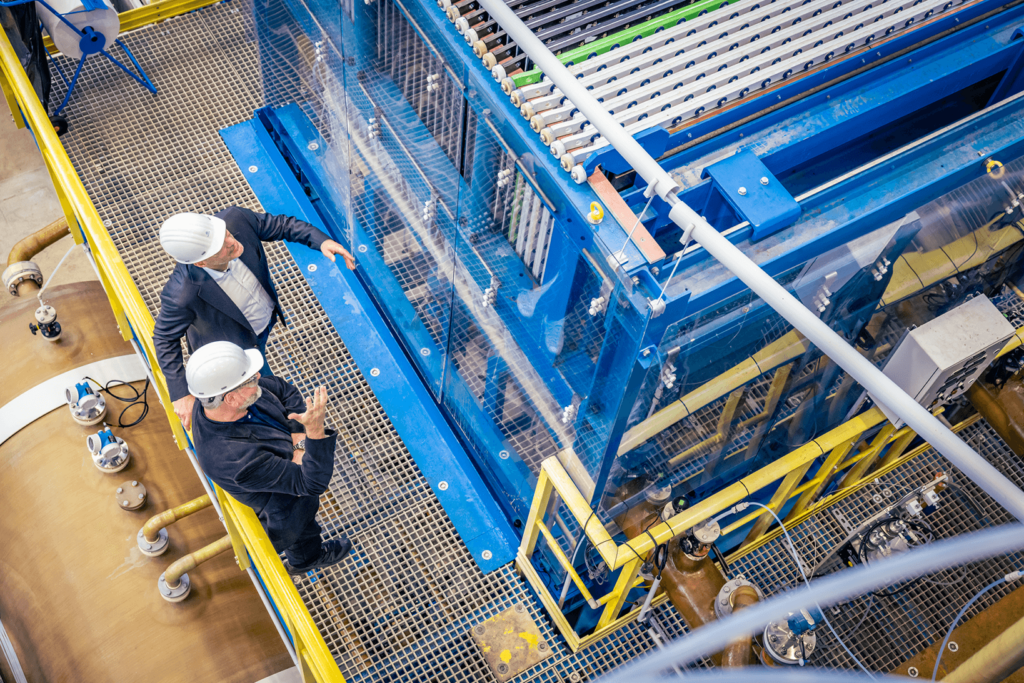
Are globally distributed hydrogen produc- tion hubs linked to transport infrastructures – known as hy- drogen valleys – the future?
Hydrogen valleys will exist in the regions where they make sense. For example, Australia and the Middle East, which are both strongly hydrogen export-driven regions. These regions can generate green electricity from wind and solar relatively cheaply and use it for green water electrolysis.
Does this also apply to desert areas, where the water supply is costly?
Contrary to popular belief, drinking water is not a factor that limits hydrogen production. Seawater can also be used for electrolysis; it just needs to be brought from the sea to the plants through pipelines. Reverse osmosis more information is a very good process.
Which is why it is already being used for electrolysis today.
So, we should place more emphasis on our relationship with Australia?
We should really cooperate intensely with this country. We cannot do that with the US because it will secure its own hydrogen supply first. Canada is seeing a similar develop- ment to Australia, with the Canadians having far too much energy compared to what they need. Canada, Australia, and the United States, will become the major players without making the same mistakes we made in Europe.
„Inexpensive hydrogen is the only way this green energy carrier will be broadly accepted and widely used. This is where the road must lead.“
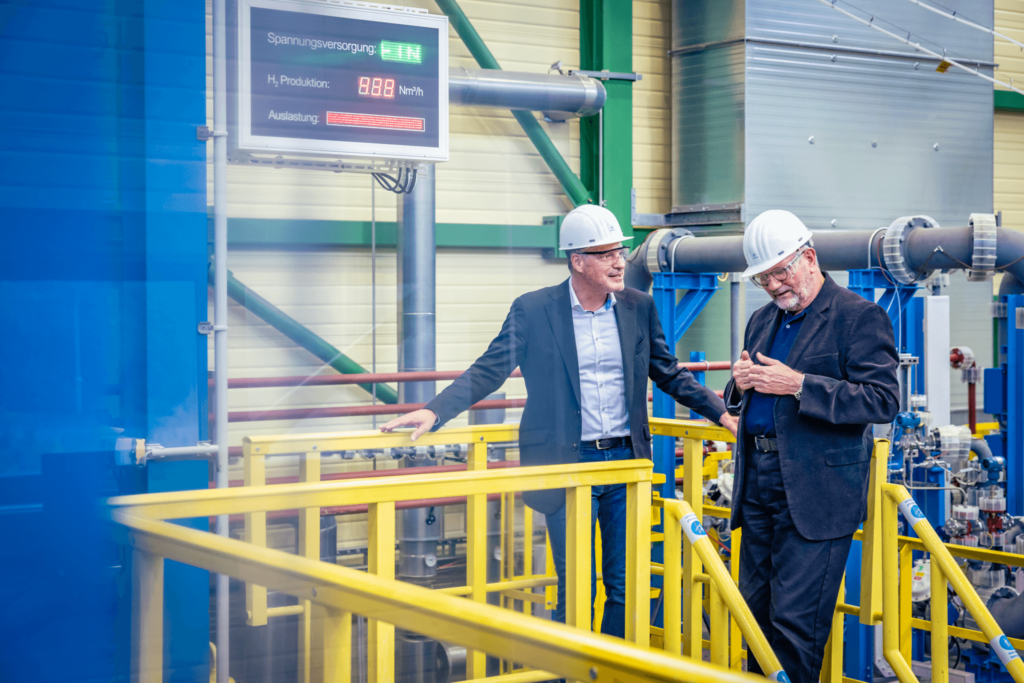
Is there already a race to divide the market?
We currently see a good example of a race among countries when looking at the US. It has jumped far ahead in the competition, and imitators are likely to follow.
Will the United States be the fastest in terms of getting projects done?
It is still too early to make such a state- ment. In recent years, the US has largely held back in terms of development, but now with the very attractive subsidy programs, they are likely to develop very, very quickly. Therefore, I expect that we will see much faster development there than elsewhere, which includes Europe.
Do we need national champions because of systemic relevance?
No. Electrolysis capacities today are made available globally, which is why it is not a system-critical asset needing protection. After all, we are building electrolysis plants around the globe. Although, I do believe that competition for elec- trolysis production capacity could arise if the transformation of the energy system develops more rapidly in some regions of the world versus others and more projects are then implemented in a shorter time. In that case, there may well be a shortage of elec- trolysis manufacturing capacity. It will then become apparent whose projects are more attractive.
That needs to be the assumption. Not all countries with a high demand for electrolysis need to have the corresponding infrastructure in their own country. Take China, for example. It has the capacity, but still has a quality problem. Germany would be predestined to solve such problems, because we are very good at complex manufacturing pro- cesses, automation, and dealing with thin sheet structures. This is one of our country’s core competencies. This is why I can well imagine that we have a very good chance of playing a major role on the world stage.
„Green water electrolysis is an essential, strategically important technology.“
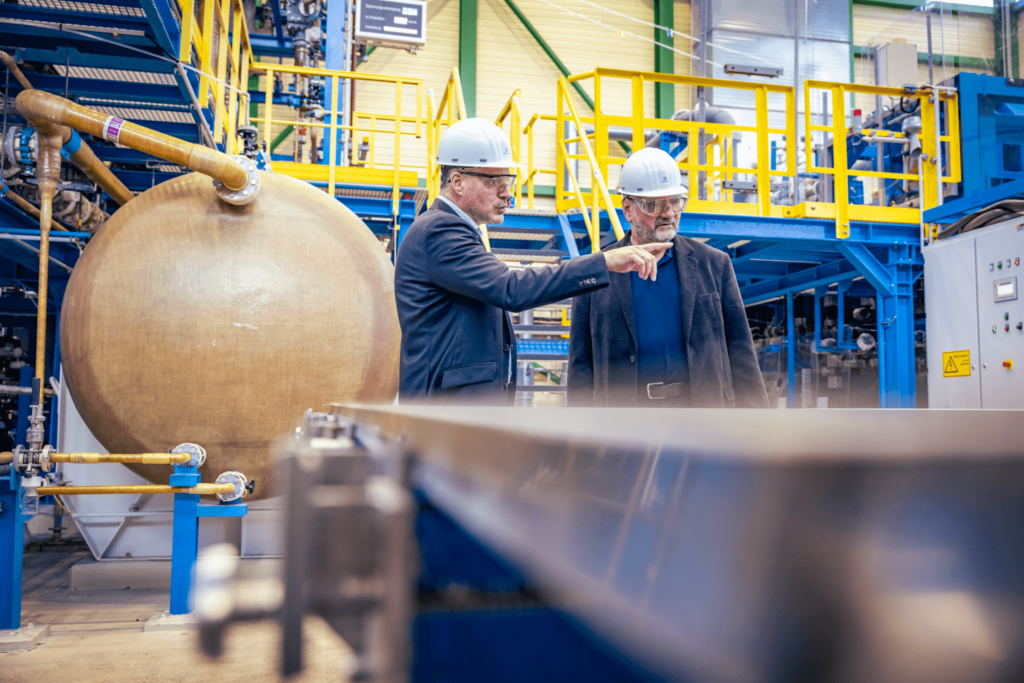
Do you expect the same conditions we have seen in the oil sector? For example, using energy sources as a political weapon?
In the case of fossil energy supply, the battle zones exist because of scarcity. This is not the case with hydrogen and renewable energies. There are about 30 countries in the world that have equal access to resources. This is an entirely different scenario than exists in the fossil energy world. The hydrogen energy world is inherently diversified. This is why you won’t see any type of hydrogen OPEC cartel.
But we can already see today that Europe will very likely never be able to meet its hydrogen needs on its own. We will see very large-scale hydrogen imports in Europe. For that reason, it is probably worth joining forces with countries that are very export-oriented when it comes to hydrogen.
Australia alone could supply all of Europe with hydrogen. But unfortunately, there are a few importing countries located closer to Australia, for example, Korea and Japan. The German government has certainly recognized this. The foreign and economic policy initiatives for building partnerships are exactly the right ones at the right time in the right places.
But how do we solve the transport problem for imports from Canada and Australia?
Due to the extensive distance between Europe and Australia, laying a pipeline would be difficult. We will probably transport hydrogen liquefied as ammonia to the place it will be used. But yes, there are still many challenges that we need to better understand and master.
The transport issue is a difficult one, but the German government is well prepared to deal with it. There are three flagship projects for hydrogen more information , one of which deals with transport. Tremendous groundwork has already been done. To estimate the costs correctly, hydrogen needs to be seen in the context of the energy system as a whole. It’s not very clever to say I produce hydrogen, and then transform, transport and convert it back into hydrogen – and ultimately into something else. Again, it makes sense to start thinking from the end result. In other words, when I have this application or that application, what’s the cheapest form of transport? The result will be that liq- uid hydrogen is probably the most difficult form to use and trans- port. Transport solutions on a large scale are a challenge because they are intertwined with even more technological difficulties than hydrogen production.
North Africa is a much-discussed location for hydrogen production. How do you assess a pipeline solution for supplying Europe? Would this be a cost-effective solution?
Technologically, perhaps, but the pipeline solution for gas from Russia has shown that this solution can be problematic. We have to look at the energy policy triangle of secu- rity of supply, economic efficiency and environmental compatibil- ity and invest in all three corners. If we have learned anything from the Ukraine war, it is that reliability cannot be expected. That’s why we should switch much of Europe’s energy supply to ship trans- port, because not only does it offers security, but you can buy anywhere. Besides, pipeline transport is not that much cheaper than ship transport. Security of supply has its cost, but it is not an exorbitantly high one.
Power-political decisions have also caused scarcity in other raw materials. What is the current situation with iridium, for example? Is this also threatened by bottlenecks
Alle Elemente für die Alkalische Wasserelektrolyse gibt es genug in der Welt. Materialfragen sind hier günstiger als bei der PEM-Technologie, also der sauren Elektrolyse. Technologisch betrachtet ist nicht die Herstellung des Wasserstoffs das Problem, sondern diaThere is ample supply of the elements required for alkaline water electrolysis. Material issues are more favorable here than with PEM technology, i.e., acid electrolysis. From a technological standpoint, hydrogen production is not the problem; the real technological challenge is the oxygen produced when hydrogen is generated. But alkaline water electrolysis has its share of challenges too, including the necessity to create a recy- clable solution.e Herstellung des Sauerstoffs, der bei der Erzeugung des Wasserstoffs anfällt, das ist die eigentliche technologische Herausforderung. Aber auch bei der Alkalischen Wasserelektrolyse gibt es genügend Herausforderungen. So wird es notwendig sein, eine recycelbare Lösung aufzubauen.
We want to minimize the use of rare earths, metals and compounds in our systems that are difficult to obtain and have delicate environmental conditions. That is the reason this type of research is so important. Our own research and devel- opment activities are also in the area of systems and alloys for coating electrodes. These should ideally be made of metals avail- able on a large scale, sustainably mined to a reasonable extent and easily recyclable. We are already working to ensure that the nickel in the cells after 20 to 30 years of use can be recycled.
„There will have to be a certain trade-off between green and other colors of hydrogen for some time, because we cannot build a green hydrogen infrastructure fast enough.”
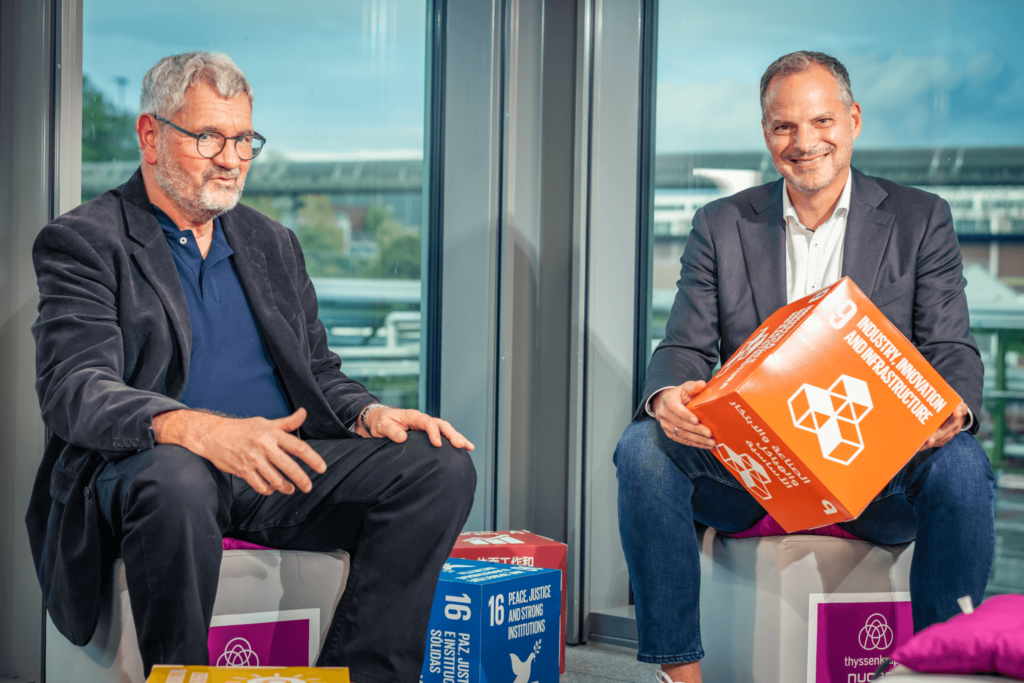
Is it reasonable to assume that the coating of the electrode can be dispensed with in the future?
Researchers are working intensively on this topic. But many gaps in knowledge still exist. Alternative materials already work, but not well enough. However, this problem can be solved, and I am convinced that buried with this is tremendous technological potential.
This would also make a significant contri- bution to reducing the costs of electrolyzers. Inexpensive hydro- gen is the only way this green energy carrier will be broadly accepted and widely used. This is where the road must lead.
There are other ideas that involve working with sacrificial anodes, i.e., electrodes made of carbon, or their produc- tion from biomasses such as sugar. Water can also be split in this way. This is a completely different path that is not being taken at the moment due to a lack of sufficient imagination. Technology with plate electrolyzers has not yet been exhausted. Once this stage is reached, it is possible to imagine taking a completely new approach to electrolysis. There are still some possibilities out there.
What are the next major steps of develop- ment in the field of electrolysis?
Major breakthroughs should not be expected. The decisive factor now is ongoing further develop- ment. The goal should be to gain momentum on the path we are on and begin implementation, rather than relying on the next big hype.
Yes. The next big thing is to make the previous one bigger.
It was said earlier that there will not be enough hydrogen to satisfy demand. If this is the case, what contribution, if any, can this technology make to climate protection?
Hydrogen produced via electrolysis with electricity from renewable energies is emission-free. Whenever it can be used as an energy carrier, it helps ensure that we do not produce CO2. Therefore, using green hydrogen will already save us very significant amounts of CO2.
Hydrogen produced via electrolysis with electricity from renewable energies is emission-free. Whenever it can be used as an energy carrier, it helps ensure that we do not produce CO2. Therefore, using green hydrogen will already save us very significant amounts of CO2.
Isn't hydrogen also a greenhouse gas?
Yes, that’s why it is crucial that we are care- ful when we use it on such a large scale. After all, the green- house gas coefficient of hydrogen is seven times greater than that of CO2. The good thing however is that the lifetime is not very long, whereas carbon dioxide stays in the atmosphere for- ever. That is why the cumulative damage of CO2 is so enor- mous. In the case of hydrogen, the estimated lifetime is just a few months.
Does this mean everything is fine?
No. Hydrogen triggers a complicated run-off mechanism in the atmosphere that creates radicals more information . These can break down pollutants such as hydro- carbons and carbon monoxide. This type of process also exists on
the basis of natural emissions, which is why scientists argue fiercely about how great the contribution of artificial hydrogen is compared to the natural reaction. It is important to keep this in mind. It forces us to handle hydrogen in a technologically clean manner – cleaner than would be necessary to avoid an explosion or a fire. This is true for the entire hydrogen value chain. It’s not a showstopper or an insoluble problem, but it’s definitely a serious one.
When will we be able to satisfy the appetite for green hydrogen?
Unfortunately, at the beginning, we won’t be able to produce everything as green hydrogen. Project runt- imes are too extensive to achieve this, and the development of renewable energies will take too long. This means we cannot wait exclusively for green hydrogen for industrial use.
The electricity needed for water electrol- ysis is also available from fossil sources and nuclear power. Should we use these to make a rapid switch to green energy?
It has its advantages and disadvantages. With blue hydrogen, which is conventionally produced by captur- ing and injecting the CO2 underground, the problem seems to be solved, at least in the short term. But methane is lost upstream, which is also a greenhouse gas. Looking at the CO2 footprint, the use of alternative power sources can’t match what renewable energies give us in electrolysis. We need to consider how far we want to go in these areas to achieve our goal of improving our cli- mate footprint. One thing is clear: building a nuclear power plant today to produce hydrogen, is a decision for this system for the next 20 to 30 years. The reason is that it doesn’t make sense to ramp up a nuclear power plant for a transitory period only to shut it down again. There will have to be a certain trade-off between green and other colors of hydrogen for some time, because we cannot build a green hydrogen infrastructure fast enough.
Is carbon dioxide storage even a viable option?
There are versions of CCS (carbon capture and storage) – the storage of carbon dioxide underground or at the bottom of the sea – that are supposed to serve climate pro- tection.
Are you skeptical?
The existing, depleted gas deposits could be replenished with CO2. This is harmless and should be done. It becomes difficult when you proceed, as with fracking, that is, by drilling into deposits and injecting CO2 where carbon dioxide did not exist before. I would be very cautious about doing this.
What could happen?
Radioactive waste eventually loses its destruc- tive power. That takes a long, long time, but it happens. CO2 is a molecule with an infinite life span. That means we must not make the same mistake we made 100 years ago. Back then, we started burning carbon. At that time, it was said that the atmosphere is huge and could take it. We now see that we are reaching the lim- its. This means, if we put it in the ground at these dimensions, we are making the same mistake we made when we started burning carbon. We would be setting a chain of processes in motion that we can’t control or turn off again. This would leave behind immense damage for future generations. We simply cannot do that! Any sustainable energy system is only sustainable if all material flows are closed, and the storage of carbon dioxide is not a material flow that is closed. Therefore, it can only be done safely where a gas has already existed.
Similar to the use of the gas bubbles in the North Sea?
This would work for 10 or 20 years. But you also have to consider that a huge infrastructure is needed to start this. Then the time will quickly come when people say, “Now the infrastructure is there and now we are doing this and using that.” The path dependency that is created by such processes needs to be examined very carefully. Existing gas production infrastructure can be used for storage, but that does not mean we should think we can safely pump CO2 in at a depth of 7,000 meters. Research on this has been conducted for two, maybe three years, but these facilities have to function safely for billions of years. Again, we simply cannot do that!
Can't laws be used to regulate this?
In the end, laws cannot be reviewed due to the long duration. This is the problem we are facing now. This is comparable to the situation of emitting huge amounts of carbon dioxide into the atmosphere. There is no consideration given to the consequences or the effects on future generations.
Above all, we should have known. As early as 1896, Svante Arrhenius predicted that a doubling of the CO2 concentration in the atmosphere would result in a temperature increase of 5 degrees. In 1908, in a publication Svante Arrhe-
nius calculated that the climate would heat up by 1.5 degrees over the next 100 years. This shows how climate change has been known in detail for a long time. Let’s not make similar mis- takes again!

